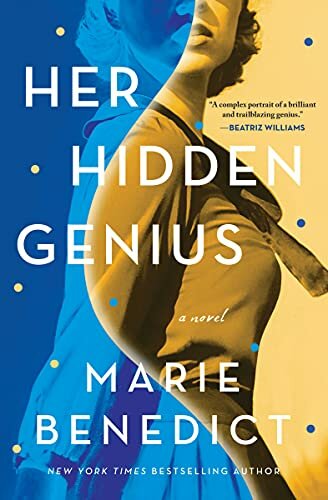A woman of science who was overshadowed and overlooked
Once again, novelist Marie Benedict focuses her narrative on a brilliant, but overlooked woman, as she did in her earlier novels, “The Other Einstein,” about Albert’s wife Mileva, and “The Only Woman in the Room,” about film star Heddy Lamaar. Both of those books portrayed extremely capable scientists who were overshadowed by male counterparts.
This item is available in full to subscribers.
Please log in to continue |
Register to post eventsIf you'd like to post an event to our calendar, you can create a free account by clicking here. Note that free accounts do not have access to our subscriber-only content. |
Day pass subscribers
Are you a day pass subscriber who needs to log in? Click here to continue.
A woman of science who was overshadowed and overlooked
‘Her Hidden Genius’
By Marie Benedict
Once again, novelist Marie Benedict focuses her narrative on a brilliant, but overlooked woman, as she did in her earlier novels, “The Other Einstein,” about Albert’s wife Mileva, and “The Only Woman in the Room,” about film star Heddy Lamaar. Both of those books portrayed extremely capable scientists who were overshadowed by male counterparts.
In this book, the subject is Rosalind Franklin, another female researcher who worked to discover the very nature of our DNA. As with the other two, Benedict conducted intense historical research to unearth the significant role Franklin played in the scientific world. In choosing molecular biology as a career, Rosalind ran into conflict with her father, a wealthy Jewish philanthropist who believed women should use their talents for the betterment of mankind through charity, good works, and a suitable marriage, rather than a salaried position.
She further antagonized him by declaring she did not believe in God or the afterlife, but in science. Moreover, in her chosen field of research, she encountered blatant misogyny as a woman in a man’s world. At Cambridge she was the only woman in a laboratory full of aloof men.
In 1947, after commenting at a meeting at the Royal Institution in London where she was booed by two scientists who yelled “women should know their place,” she relocated to Paris to study x-ray crystallography. Although holding the opinion that marriage and motherhood were incompatible with a career, she fell in love with her mentor, Jacques Mering, who omitted telling her that he was married.
Upon this shocking disappointment, she returned to England in 1951 to work at King’s College on a fellowship. Her work was to unlock the question of how DNA can store vast quantities of genetic information and then transmit and create more genetic information. The purpose of her research was to find out how life itself replicates in endless, observable permutations.
In this British lab she was able to make more progress than other scientists there had been capable of and learned there were two forms of DNA, a revolutionary finding. However, the assistant director there, Maurice Wilkins, stole her preliminary data and presented them as his own at a conference.
It was Rosalind who discovered there were two distinct forms of DNA, an A and a B form that had the structure of helices. She personally made the correct calculations, which were usurped.
While she, more than anyone else, was responsible for this world-changing, invaluable contribution to humanity, fellow scientists James Watson, Francis Crick, and Maurice Wilkins were awarded the Nobel Prize in 1962 for papers and findings based on Rosalind’s research. In the end she actually gave her life literally to science, as she succumbed at age 36 to the cumulative damage of exposure to radiation.
The author first became intrigued with Rosalind’s story and her role in the discovery of DNA by the publication of Anne Sayer’s “Rosalind Franklin and DNA.” In “Her Hidden Genius,” the author attempts to give Rosalind her due for her incredible discoveries.
As in her earlier historical novels, author Marie Benedict highlights a brilliant woman and celebrates her innovative methods and achievements in an extremely competitive and male dominated field.
Although replete with scientific terms and data – such as isomorphic replacement, the Ehrenberg-Spear tube, and electromagnetic beam – which may be difficult for the layman to understand, the book provides insight into the rivalry existing in the scientific community to be the first to discover some breakthrough.
At the end of her life, Franklin had begun research to unlock the secrets of RNA, along with the hidden workings of the tobacco mosaic virus. It has taken years for Franklin to become a legend in her field, partly because she was cast in a negative light for her perceived lack of femininity, her refusal to act as a subordinate to Wilkins, in addition to Watson’s portrayal of her as hostile, unattractive, obstinate, and narrow-minded.
After careful investigation, the author was determined to correct these inaccurate stereotypes created by biased competitors who were bitter at being bested by a female.
Donna Bruno is a prizewinning author and poet recently recognized with four awards by National League of American Pen Women.






